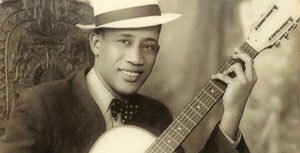
On his voyage aboard the ship Beagle, Charles Darwin passed through Cabo Verde. In São Domingos, on the island of Santiago, he came into contact with Batuku, which he describes thus:
“It happened to be a grand feast-day, and the village was full of people. 0n our return we overtook a party of about twenty young black girls, dressed in excellent taste, their black skins and snow-white linen being set off by colored turbans and large shawls. As soon as we approached near, they suddenly all tumed round, and covering the path with their shawls, sung with great energy a wild song, beating time with their hands upon their legs. We threw them some vintems, which were received with screams of laughter, and we left them redoubling the noise of their song.”
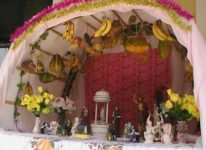
Prohibition of Tabanka: Pastoral of the Bishop of Cabo Verde Dom João Henrique Moniz, April 29, 1847, prohibits the participation of members of tabanka groups in the festivities of Santa Cruz, May 3rd:
“(…) but we absolutely forbid, under penalty of Excommunication, that masked figures, or those in filthy and derisory costumes, appear in the same temples to attend the Divine Offices (…)”.

Possibly the earliest reference to morna published in print. In the Portuguese magazine A Época, José Maria de Sousa Monteiro writes:
“In addition to the batuques and mornas (saráos), with which the inhabitants of the Islands kill time, and distract from hunger, or celebrate some notable event, or the day of some Saint of their devotion, there is a general festival every year in the archipelago, and it is that of Santa Cruz, which mainly belongs to the slaves.”

1st edition of the book O Escravo (The Slave), by José Evaristo de Almeida, the first novel with a Cabo Verdean theme, whose action takes place in 1935. A Batuku session is described in this work.
“While one of the hands was falling with regularity – extracting from the cloth a rhythmic and dry sound, the other one was making a tremor, a kind of ruffle, which is where all the delicacy of the xabeta lies.”

Elevation of Vila da Praia to the category of city. April 29th.
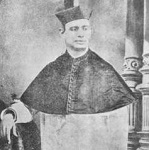
Birth of Canon António Manuel da Costa Teixeira, creator of the Almanach Luso-Africano (Luso-African Almanac, where scores of Cabo Verdean songs were published. The Almanac had two editions: 1895 and 1899. Among other cultural activities, Canon Teixeira translated Camões into the Cabo Verdean language.

Prohibition of Batuku: the administrator of the Municipality of Praia, José Gabriel Cordeiro, prohibits Batuku sessions in “the entire area of the city” and, as in the previous century’s document, orders the arrest of anyone who disobeys.
“(…) being the so-called batuques an entertainment that is opposed to the current civilization of the century, being highly inconvenient and troublesome, offensive to good morals, order, and public tranquility.” And its participants are also referred to as “less civilized people”.
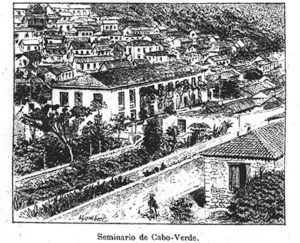
Foundation of the secondary school of São Nicolau.

Birth of Eugénio Tavares, on October 18th.

Teatro Africano (The African Theater) is inaugurated on January 1st, 1868.
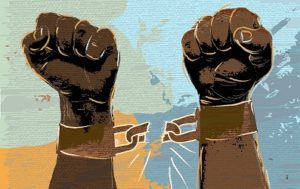
Abolition of slavery in Cabo Verde.
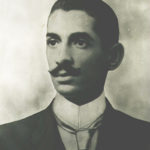
Birth of Pedro Cardoso, poet and journalist, on September 14th.
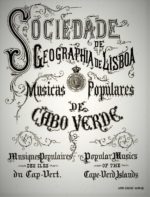
Under the title Musicas Populares de Cabo Verde (Popular Songs of Cabo Verde), the Sociedade de Geografia de Lisboa (Geography Society of Lisbon) publishes scores of Cabo Verdean songs.
Publication of the book by Austrian naturalist and ethnographer Cornelio Doelter y Cisterich describing Batuku, which he had witnessed some time before on his trip to Cabo Verde.
“On the island of S. Thiago, for example, the most popular dance is batuko, a dance reminiscent of the African dances found among the Papels, Mandingas, etc. Batuko consists of participants who form a wide circle. To the sound of loud yells, a man and a woman56 emerge from the midst of the circle whose dance consists of wild contortions which are accompanied by such extreme gestures that they can hardly be described with words.” (translation to English from Susan Hurley-Glowa’s thesis Batuko and Funana: Musical Traditions of Santiago, Republic of Cape Verde, 1997).
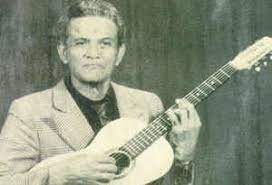

Directed by journalist Luís Loff Vasconcelos, the Revista de Cabo Verde was an important source of data about the turn of the century in the archipelago and consisted of 17 editions throughout 1899.
